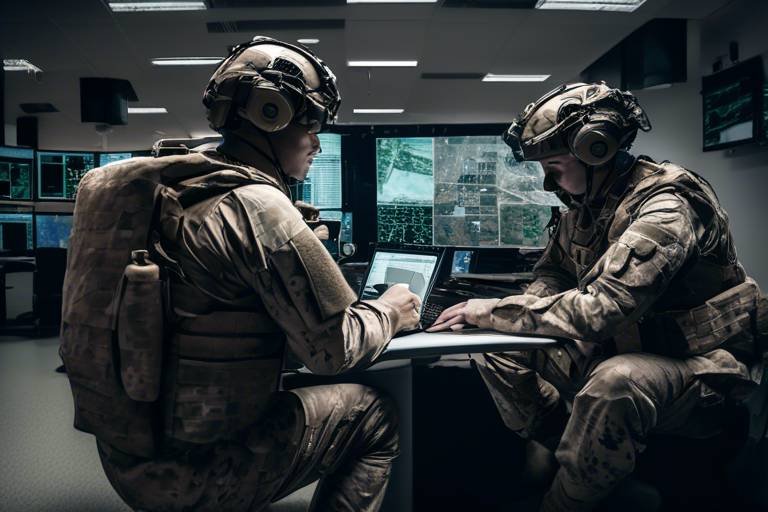The Role of High-Tech Armor in Soldier Safety
In today's ever-evolving battlefield, the safety of soldiers is paramount. With advancements in technology, high-tech armor has emerged as a game-changer, significantly enhancing the protection and survivability of military personnel. This article explores the fascinating world of high-tech armor, examining how it not only shields soldiers from physical threats but also integrates cutting-edge technology to boost their overall effectiveness in combat scenarios. Imagine a world where soldiers are not just equipped with heavy gear but are empowered with lightweight, flexible armor that adapts to their needs—this is the reality of modern military technology.
Recent innovations in materials science have revolutionized the development of armor. Gone are the days of cumbersome, heavy gear that hindered movement. Today, we have lighter, stronger materials that significantly improve mobility without compromising protection. For instance, the introduction of kevlar and Dyneema has allowed for the creation of armor that is not only robust but also lightweight. This means soldiers can move swiftly on the battlefield, dodging threats while still being shielded from harm. The ability to maintain agility and speed can be the difference between life and death in critical situations.
High-tech armor comes in various forms, each tailored to meet specific threats faced by soldiers. From ballistic vests to advanced helmets and even vehicle armor, the diversity of protective gear ensures that military personnel are well-equipped for any scenario. Each type of armor is engineered with unique materials and technologies, designed to provide maximum safety while allowing soldiers to perform their duties effectively. For example, ballistic vests are crucial for personal protection, while helmets are essential for safeguarding against head injuries. The synergy between these different types of armor creates a comprehensive defense system for soldiers.
Ballistic vests are a cornerstone of personal protection for soldiers. These vests are meticulously engineered to absorb and disperse the energy from bullets, providing a vital layer of defense against gunfire. The effectiveness of these vests is categorized by levels of protection, defined by the National Institute of Justice (NIJ). Understanding these standards is crucial for military personnel as it helps them select the appropriate gear for their specific operational needs. For instance, a soldier deployed in a high-risk area would require a vest rated at a higher level than one stationed in a relatively safer environment.
The NIJ has established a set of standards that categorize armor into different levels based on their ballistic resistance. Here's a quick overview of these levels:
| NIJ Level | Description |
|---|---|
| I | Protects against .22 LR and .380 ACP |
| IIA | Protects against 9mm and .40 S&W |
| II | Protects against 9mm and .357 Magnum |
| IIIA | Protects against .44 Magnum and 12 gauge |
| III | Protects against 7.62mm NATO |
| IV | Protects against armor-piercing rounds |
While the level of protection is essential, the comfort and fit of ballistic vests cannot be overlooked. Innovations in design have made it possible to create armor that conforms to the body, allowing for greater mobility and comfort. Imagine wearing a vest that feels like a second skin rather than a cumbersome burden. This enhanced comfort not only improves the soldier's performance but also encourages them to wear their armor consistently, ensuring maximum protection at all times.
Modern helmets have evolved beyond mere head protection; they now incorporate advanced materials and technologies that provide enhanced protection against shrapnel and ballistic threats. These helmets are designed with integrated communication systems, allowing soldiers to coordinate effectively during missions. Picture a soldier in the heat of battle, seamlessly communicating with their team while being shielded from potential head injuries—this is the power of advanced helmet technologies.
The integration of technology into armor systems has transformed soldier safety in unprecedented ways. With the introduction of sensors and communication devices, armor has evolved into a smart system that provides real-time data and situational awareness. This technological advancement not only enhances the protection offered but also significantly boosts operational effectiveness. Soldiers can now make informed decisions based on the data provided by their armor, allowing for a more strategic approach to combat.
Smart armor systems utilize sensors to detect threats and assess damage in real-time. This capability is invaluable for commanders, as it allows them to make informed decisions quickly. Imagine a scenario where a soldier's armor can alert their team to incoming fire or indicate when it has sustained damage. This level of situational awareness can dramatically improve the safety of soldiers in the field, making it easier to respond to threats effectively.
As technology continues to evolve, the future of armor technology holds exciting possibilities. Trends such as adaptive materials that can change their properties based on the environment, and enhanced connectivity that allows for seamless communication between soldiers and their equipment, are on the horizon. These innovations promise to further improve soldier safety and operational efficiency, creating a battlefield where soldiers are not only protected but also empowered to perform at their best.
- What materials are commonly used in high-tech armor? High-tech armor often utilizes materials such as Kevlar, Dyneema, and advanced ceramics for optimal protection and lightweight design.
- How do I know what level of armor protection I need? The level of armor protection required depends on the specific threats you may face. Consult the NIJ standards and assess your operational environment.
- Are modern helmets equipped with communication systems? Yes, many modern helmets are designed with integrated communication systems to facilitate coordination during missions.
- What are smart armor systems? Smart armor systems are equipped with sensors that detect threats and assess damage, providing real-time data to enhance soldier safety and decision-making.

Advancements in Armor Materials
This article explores the advancements in high-tech armor technology and its critical role in enhancing soldier safety on the battlefield. We will delve into various aspects of this vital subject.
Recent innovations in materials science have revolutionized the way we think about soldier protection. Gone are the days when armor was bulky and cumbersome. Now, thanks to cutting-edge technology, we have armor that is not only lighter but also significantly stronger. This transformation is akin to upgrading from a clunky old flip phone to a sleek smartphone—it's not just about aesthetics; it’s about functionality and performance.
Today's high-tech armor materials include advanced composites and ceramics that are designed to withstand high-velocity impacts while remaining lightweight. For instance, materials like Kevlar and Dyneema are frequently used in ballistic vests, providing exceptional protection without compromising mobility. The ability to move freely is crucial in combat situations, where every second counts. Imagine trying to run a marathon while dragging a heavy backpack; it’s a similar challenge faced by soldiers when their armor is too cumbersome.
Moreover, the integration of nanotechnology into armor materials is paving the way for even more remarkable advancements. Nanofibers can be woven into fabric, creating a protective layer that is both incredibly strong and flexible. This means that soldiers can wear armor that feels like a second skin, allowing for greater agility and comfort. The evolution of armor materials is not just about protection; it’s about enhancing the overall operational effectiveness of military personnel.
To illustrate the differences in armor materials, let's take a look at the following table that compares traditional materials with modern advancements:
| Material Type | Weight | Protection Level | Flexibility |
|---|---|---|---|
| Traditional Steel | Heavy | Moderate | Low |
| Kevlar | Light | High | Moderate |
| Dyneema | Very Light | Very High | High |
| Nano-composite | Ultra Light | Extremely High | Very High |
As we continue to explore the advancements in armor materials, it’s important to note that the research does not stop here. Scientists and engineers are tirelessly working to develop adaptive materials that can respond to different threats in real-time. Imagine armor that can harden upon impact or change its shape to better protect vital organs. This kind of innovation could redefine soldier safety on the battlefield.
In conclusion, the advancements in armor materials are a game-changer for soldier safety. With the right combination of strength, weight, and flexibility, modern armor is designed to protect while allowing soldiers to perform at their best. As technology continues to evolve, we can only anticipate even greater improvements that will ensure our military personnel are equipped to face any challenge head-on.
- What materials are commonly used in high-tech armor?
Common materials include Kevlar, Dyneema, and advanced ceramics. - How does weight affect soldier mobility?
Heavier armor can restrict movement, making it harder for soldiers to perform their duties effectively. - What is the future of armor technology?
The future may include adaptive materials that can respond to threats in real-time.
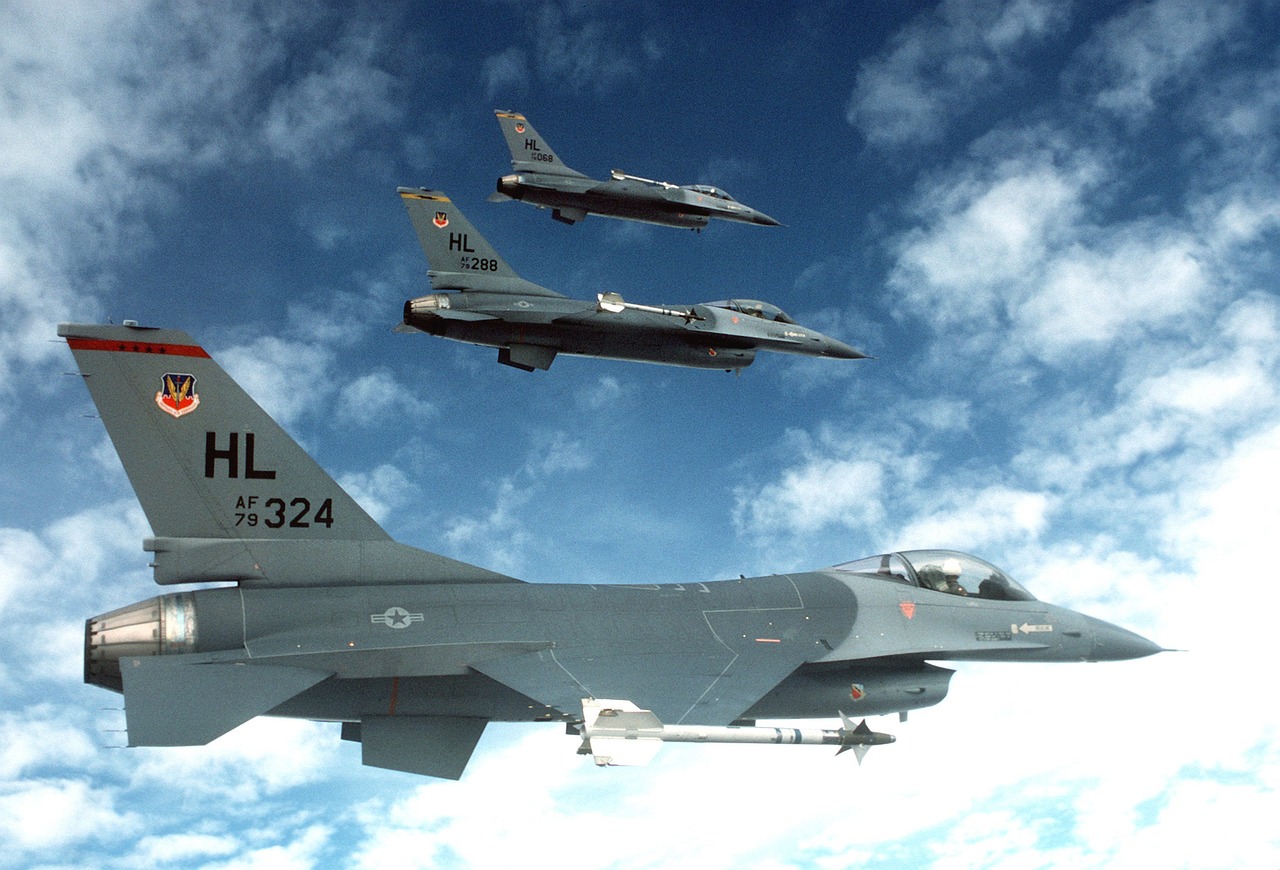
Types of High-Tech Armor
When we think about soldier safety, the term "high-tech armor" often conjures images of futuristic gear that looks like it’s straight out of a sci-fi movie. But in reality, high-tech armor is a vital component of modern military operations, designed to protect our brave men and women in uniform. There are several types of high-tech armor, each tailored to meet specific threats and challenges faced on the battlefield. Let's dive into the various types of armor that are revolutionizing soldier safety today.
First and foremost, we have ballistic vests, which serve as a frontline defense against gunfire. These vests are not just heavy fabric; they are engineered with advanced materials that absorb and disperse the energy from bullets. Imagine wearing a shield that helps deflect incoming danger while allowing you to move freely. That's the essence of modern ballistic vests. They come in various levels of protection, categorized by the National Institute of Justice (NIJ). This classification system helps military personnel choose the right vest based on the specific threats they might encounter.
Next up, we have helmets. Today's helmets are no longer just hard hats; they incorporate cutting-edge materials and technologies that provide enhanced protection against shrapnel and ballistic threats. These helmets are often equipped with built-in communication systems, enabling seamless coordination among soldiers during missions. Picture this: a soldier in the heat of combat, not only protected by a robust helmet but also able to communicate with teammates without breaking stride. It's a game-changer!
In addition to personal armor, we cannot overlook the importance of vehicle armor. Military vehicles are often the targets of explosive devices and direct fire. High-tech vehicle armor is designed to withstand significant impacts while ensuring the safety of the personnel inside. This armor is typically made from composite materials that provide strength without adding excessive weight, allowing for better mobility on the battlefield. Think of it as a protective cocoon that keeps soldiers safe while they navigate through hostile territories.
As we explore the different types of high-tech armor, it's crucial to consider how these elements work together. The integration of personal and vehicle armor creates a comprehensive safety net for soldiers. For instance, when a soldier wearing a ballistic vest and helmet enters a vehicle outfitted with advanced armor, they are significantly increasing their chances of survival in dangerous situations. This synergy between various armor types enhances overall operational effectiveness.
In summary, the types of high-tech armor available today—from ballistic vests and helmets to vehicle armor—are all designed with one primary goal in mind: to keep soldiers safe. Each type plays a unique role in protecting military personnel from the myriad threats they face on the battlefield. As technology continues to evolve, we can expect even more innovative solutions to emerge, further enhancing the safety and effectiveness of our armed forces.
- What materials are used in high-tech armor?
High-tech armor is typically made from advanced materials such as Kevlar, Dyneema, and other composite fabrics that offer high levels of protection while remaining lightweight.
- How do I know which level of ballistic vest to choose?
The National Institute of Justice (NIJ) provides a classification system for ballistic vests, which helps users select the appropriate level of protection based on potential threats.
- Are modern helmets comfortable to wear?
Yes! Innovations in helmet design have focused on comfort and fit, ensuring that they conform to the head while allowing for maximum mobility.
- What is smart armor?
Smart armor systems incorporate sensors and technology that can detect threats and assess damage, providing real-time data to enhance soldier safety.

Ballistic Vests
Ballistic vests are more than just a piece of fabric; they are a critical line of defense for soldiers on the battlefield. Imagine stepping into a high-stakes environment where every second counts, and the difference between life and death can hinge on the gear you wear. Ballistic vests are engineered to absorb and disperse the energy from bullets, offering soldiers a vital layer of protection against gunfire in combat situations. These vests are constructed using advanced materials that combine both strength and flexibility, allowing for a balance between safety and mobility.
One of the most fascinating aspects of ballistic vests is their ability to be categorized according to the level of protection they provide. The National Institute of Justice (NIJ) has established standards that define these levels, ranging from soft armor, which can stop low-velocity rounds, to hard armor plates designed to withstand high-velocity impacts. Understanding these standards is crucial for military personnel as it helps them select the appropriate gear tailored to their specific operational needs. Here’s a quick overview of the NIJ protection levels:
| NIJ Level | Protection Type | Typical Threats |
|---|---|---|
| I | Soft Armor | .22 LR, .380 ACP |
| IIA | Soft Armor | 9mm, .40 S&W |
| II | Soft Armor | .357 Magnum, .45 ACP |
| IIIA | Soft Armor | .44 Magnum, 12 gauge |
| III | Hard Armor | 7.62mm NATO, .30-06 |
| IV | Hard Armor | Armor-Piercing Rounds |
But it’s not just about stopping bullets; the effectiveness of ballistic vests also hinges on their comfort and fit. Imagine trying to maneuver through a hostile environment while feeling restricted by your gear. Innovations in design have made it possible to create armor that conforms to the body, allowing for greater mobility and comfort. Features such as adjustable straps, breathable materials, and ergonomic designs ensure that soldiers can perform at their best without the distraction of uncomfortable armor.
Moreover, the integration of technology in ballistic vests is paving the way for even greater advancements. Many modern vests now come equipped with pockets for additional plates, communication devices, and even sensors that can provide real-time data about the soldier's environment. This integration not only enhances protection but also contributes to the overall situational awareness of the soldier, making them more effective in the field.
In conclusion, ballistic vests are an essential component of modern military gear. They provide a crucial layer of protection while also allowing for the agility and comfort that soldiers need to perform their duties effectively. As technology continues to advance, we can expect even more improvements in the design and functionality of these life-saving garments.
- What materials are ballistic vests made from? Ballistic vests are typically made from high-strength fibers like Kevlar or Dyneema, which are designed to absorb and disperse the energy from bullets.
- How do I know which level of protection I need? The level of protection you need depends on the specific threats you may face. It's best to consult with your military advisor or follow the guidelines set by the National Institute of Justice.
- Can ballistic vests be worn over body armor? Yes, many soldiers wear ballistic vests over their body armor for added protection, especially in high-risk situations.

Level of Protection Standards
When it comes to the safety of soldiers in the field, understanding the is absolutely crucial. These standards, defined by the National Institute of Justice (NIJ), categorize armor based on its ability to withstand different types of ballistic threats. Essentially, these levels help military personnel select the right gear for their specific missions, ensuring that they are adequately protected against the dangers they face.
The NIJ has established several levels of armor protection, each designed to counteract specific threats. For instance, Level IIA armor is typically rated to stop 9mm and .40 S&W rounds, while Level IIIA can handle .44 Magnum and 12-gauge shotgun rounds. As we move up the scale, Level III armor is meant for high-velocity rifle rounds, and Level IV is designed to stop armor-piercing rounds. Here’s a quick overview:
| Protection Level | Threats | Typical Use |
|---|---|---|
| Level IIA | 9mm, .40 S&W | Law enforcement, undercover operations |
| Level IIIA | .44 Magnum, 12-gauge | Military, high-risk civilian roles |
| Level III | 7.62mm NATO, .223 Remington | Military operations |
| Level IV | Armor-piercing rounds | Combat situations requiring maximum protection |
It’s important to note that while higher protection levels can offer enhanced safety, they often come with trade-offs in terms of weight and mobility. For example, a soldier equipped with Level IV armor might have superior protection against high-caliber rounds, but the added weight can hinder mobility and endurance in the field. Therefore, the selection of armor involves a careful balance between protection and operational effectiveness.
Moreover, the advancements in armor technology have led to the development of multi-threat armor, which combines different materials to provide protection against a wider variety of threats, including both ballistic and stab threats. This innovation allows soldiers to be better prepared for the unpredictable nature of combat. Understanding these standards not only empowers military personnel to make informed decisions but also enhances their overall safety and effectiveness during missions.
- What is the highest level of armor protection? The highest level is Level IV, designed to stop armor-piercing rounds.
- How do I know what level of armor I need? Your specific operational needs and the types of threats you may face will determine the appropriate level of armor.
- Is higher protection always better? Not necessarily; higher protection levels can be heavier and may limit mobility, so it’s important to find a balance.
- Are there advancements in armor technology? Yes, innovations like multi-threat armor and smart armor systems are transforming soldier safety.

Comfort and Fit
When it comes to ballistic vests, comfort and fit are not just luxuries; they are essential components that can determine the effectiveness of the armor in real combat situations. Imagine being a soldier on the battlefield, where every second counts. If your armor is bulky or ill-fitting, it can hinder your movement and distract you from focusing on the mission at hand. This is why manufacturers are increasingly investing in innovative designs that prioritize both protection and comfort.
Modern ballistic vests are engineered with advanced materials that are not only lightweight but also highly durable. These materials allow for a snug fit that conforms to the body without sacrificing mobility. For instance, Kevlar and Dyneema are commonly used in the production of these vests, providing the necessary strength while keeping the weight down. The result? Soldiers can maneuver with ease, making quick turns and dodging threats without feeling encumbered.
Moreover, the design of these vests has evolved to include adjustable straps and customizable features that cater to different body types. This adaptability is crucial because a vest that fits one soldier perfectly might be uncomfortable for another. By allowing adjustments, manufacturers ensure that every soldier can find a fit that feels just right. This is akin to finding the perfect pair of shoes; if they don’t fit well, they can lead to blisters and discomfort, which can be detrimental in high-pressure situations.
Furthermore, the breathability of the materials used in ballistic vests plays a significant role in comfort. Soldiers often operate in extreme conditions, and overheating can be a serious issue. Many modern vests incorporate moisture-wicking fabrics that help regulate body temperature, allowing soldiers to stay cool and focused. Think of it like wearing a comfortable sports jersey that keeps you dry while you’re pushing your limits on the field.
In summary, the of ballistic vests are paramount for ensuring that soldiers can perform at their best. By prioritizing these aspects, manufacturers not only enhance soldier safety but also contribute to their overall effectiveness on the battlefield. After all, in a world where every moment can mean the difference between life and death, comfort and fit are not just nice-to-haves; they are essential.
- Why is comfort important in ballistic vests? Comfort is crucial because it allows soldiers to move freely and focus on their mission without being distracted by discomfort.
- What materials are commonly used in high-tech armor? Common materials include Kevlar and Dyneema, known for their strength and lightweight properties.
- How do adjustable straps enhance fit? Adjustable straps allow for a customizable fit, accommodating different body shapes and sizes for optimal comfort.
- Can modern vests help regulate temperature? Yes, many modern vests use moisture-wicking fabrics to help keep soldiers cool and dry in extreme conditions.
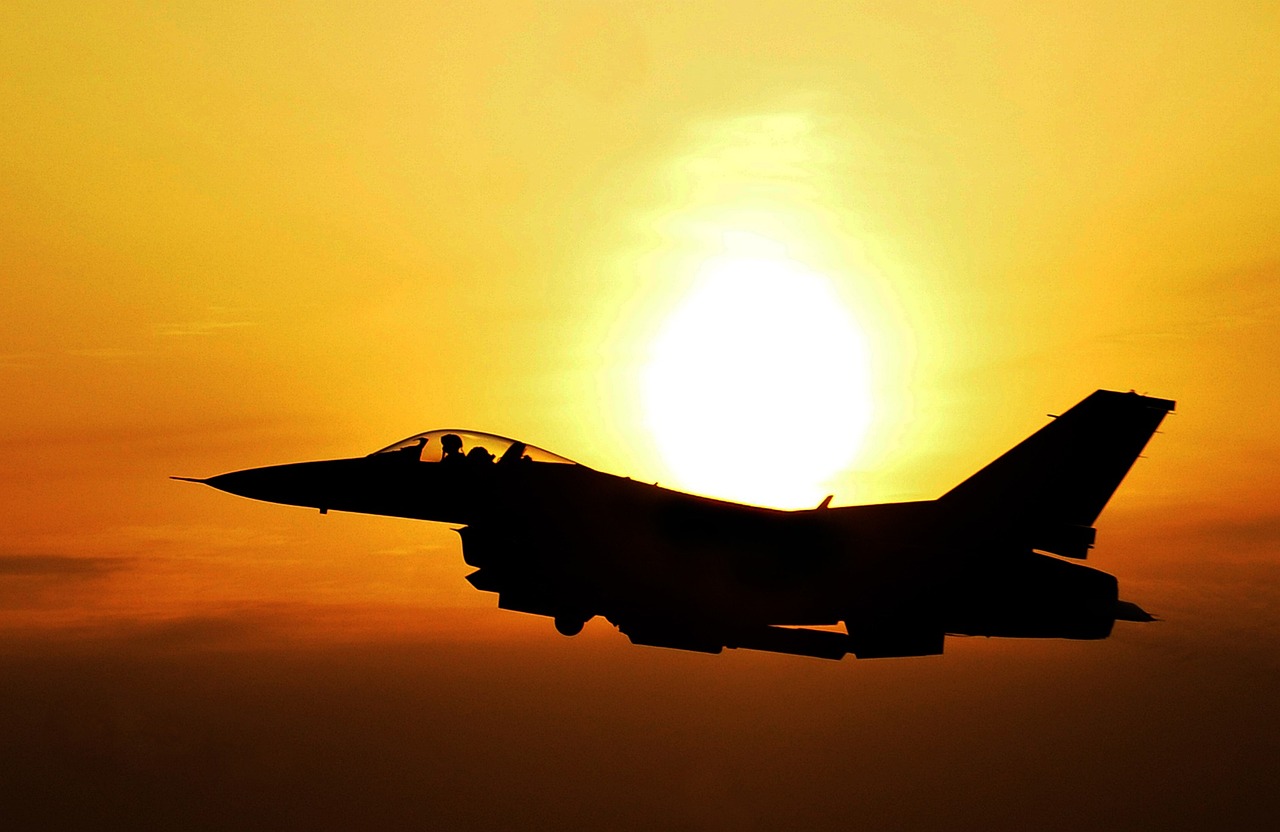
Advanced Helmet Technologies
In the ever-evolving landscape of military gear, stand out as a beacon of innovation, providing soldiers with unparalleled protection and functionality. Modern helmets are no longer just simple protective gear; they have transformed into sophisticated systems that integrate various technologies aimed at enhancing soldier safety and operational effectiveness. Imagine wearing a helmet that not only shields your head from shrapnel and ballistic threats but also keeps you connected with your team in the heat of battle. That's the reality today!
One of the most significant advancements in helmet technology is the use of high-performance materials. These materials, such as Kevlar and carbon fiber, offer exceptional strength while remaining lightweight. This means that soldiers can move freely without being weighed down, which is crucial in combat scenarios where agility can mean the difference between life and death. Additionally, these materials are designed to absorb and disperse impact energy, significantly reducing the risk of traumatic brain injuries.
Moreover, modern helmets are equipped with integrated communication systems. These systems allow for seamless communication between soldiers, enhancing coordination during missions. Picture this: a squad operating in a dense urban environment can share real-time information about enemy positions or changes in mission objectives without having to rely on hand signals or radios. This instantaneous flow of information can drastically improve a unit's response time and effectiveness.
Another fascinating aspect of advanced helmet technologies is the incorporation of augmented reality (AR). Some helmets now feature AR displays that provide critical information directly in the soldier's line of sight. This can include navigation aids, enemy locations, and even biometric data about fellow soldiers. By having this information readily available, soldiers can make more informed decisions on the battlefield, reducing the cognitive load and allowing them to focus on their immediate tasks.
In addition to these features, helmets are also being designed with modularity in mind. This means that components such as night vision goggles, gas masks, and other essential gear can be easily attached or detached based on the mission requirements. This flexibility ensures that soldiers have the right tools for any situation they may encounter, without the burden of carrying unnecessary equipment.
As we look to the future, the potential for further advancements in helmet technology is exciting. Innovations may include smart helmets that monitor vital signs and environmental conditions, providing feedback to the wearer and command staff. This could lead to early detection of health issues or environmental hazards, allowing for timely interventions.
In summary, advanced helmet technologies are revolutionizing the way soldiers protect themselves while enhancing their operational capabilities. With ongoing innovations in materials, communication systems, and integrated technologies, the future of soldier safety looks brighter than ever.
- What materials are used in advanced military helmets?
Modern military helmets commonly use materials like Kevlar and carbon fiber for their lightweight and high-strength properties. - How do integrated communication systems work in helmets?
These systems allow soldiers to communicate with each other in real-time, enhancing coordination without the need for bulky radios. - What is augmented reality in military helmets?
Augmented reality displays provide crucial information, such as navigation and enemy locations, directly in the soldier's line of sight. - Are helmets customizable for different missions?
Yes, modern helmets are designed to be modular, allowing soldiers to attach or detach various components based on mission needs.
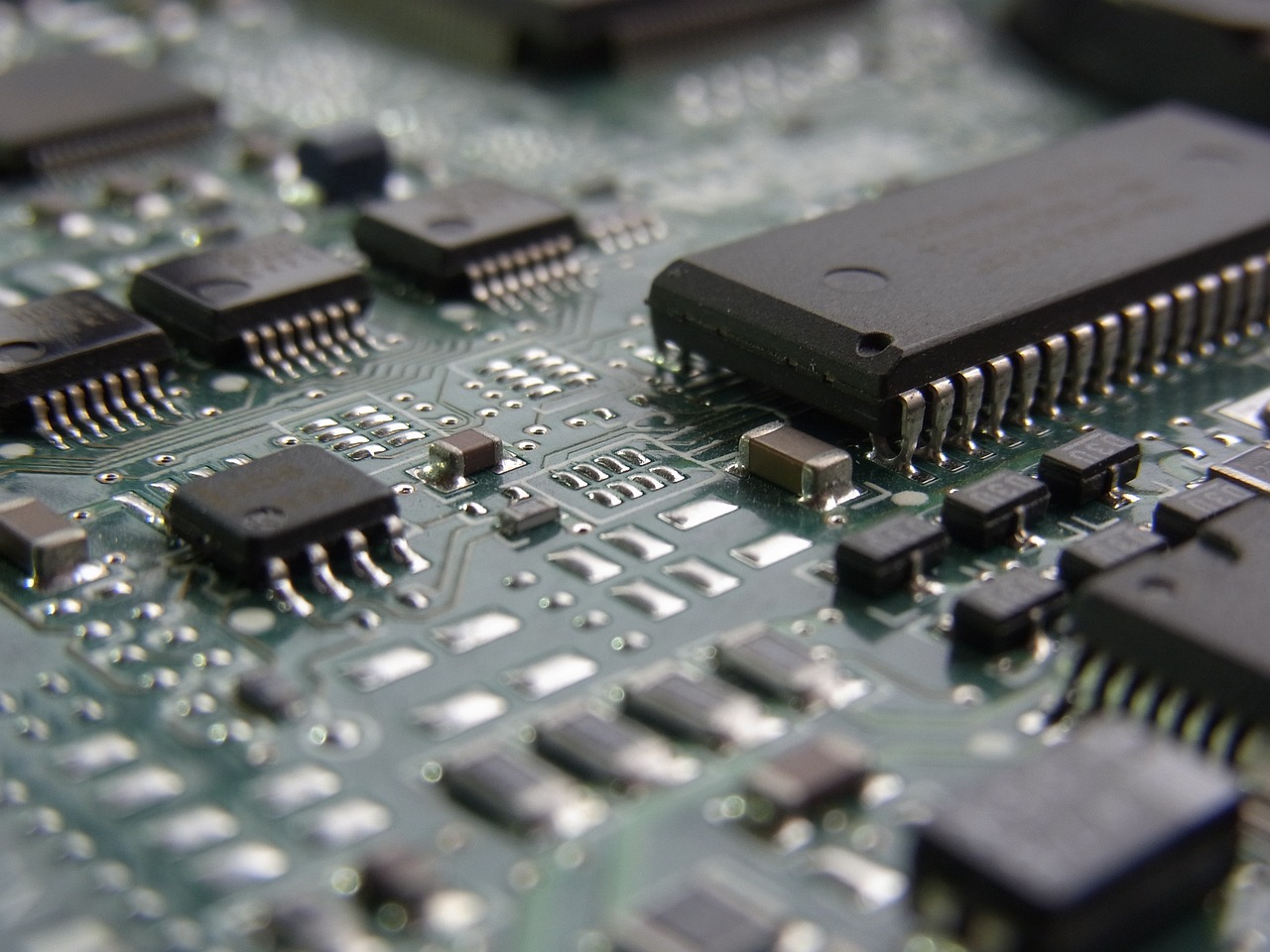
Integration of Technology in Armor
The battlefield landscape has dramatically changed over the years, and so has the technology that protects our soldiers. The integration of advanced technology into armor systems has revolutionized soldier safety, making it not just about physical protection but also about enhancing situational awareness. Imagine a soldier equipped with armor that not only shields them from bullets but also provides real-time data about their surroundings. This is no longer science fiction; it’s a reality that is saving lives.
One of the most significant advancements in this area is the incorporation of sensors into armor. These sensors can detect incoming threats, assess environmental conditions, and even monitor the soldier's health. For instance, if a soldier is injured, the armor can relay vital signs to medics, ensuring timely medical intervention. This integration of technology allows for a proactive approach to safety rather than a reactive one.
Moreover, the use of communication devices within helmets and vests has transformed how soldiers operate during missions. These systems enable seamless communication between team members, which is crucial during high-pressure situations. Imagine being in the middle of a combat zone, and your ability to communicate with your squad is hindered. With advanced armor technology, soldiers can maintain constant contact, share information about enemy positions, and coordinate their movements effectively. This not only enhances their safety but also increases their operational efficiency.
Another fascinating aspect of this technological integration is the development of smart armor systems. These systems leverage data analytics to assess threats and damage in real-time. For example, if a soldier is hit, the smart armor can instantly analyze the impact and determine whether the soldier can continue the mission or needs immediate evacuation. This capability allows commanders to make informed decisions swiftly, enhancing the safety of the troops on the ground.
As we look to the future, the potential for further advancements in armor technology is immense. Concepts like adaptive materials that can change their properties based on the environment or the type of threat are being explored. Imagine armor that becomes more rigid upon detecting a bullet or softens to allow for better mobility when the threat has passed. This kind of innovation could redefine how soldiers interact with their gear, making them more agile and protected than ever before.
In summary, the integration of technology into armor systems is not just a trend; it’s a game-changer for soldier safety. By enhancing communication, situational awareness, and threat assessment, these advancements are paving the way for a new era of military operations where soldiers can focus more on their mission and less on their safety.
- What is smart armor? Smart armor refers to armor systems equipped with sensors and communication devices that provide real-time data and threat assessment to enhance soldier safety.
- How does technology improve soldier safety? Technology improves soldier safety by providing real-time situational awareness, enabling effective communication, and allowing for proactive health monitoring and threat detection.
- What are adaptive materials in armor? Adaptive materials are advanced materials that can change their properties based on environmental conditions or threats, offering enhanced protection and mobility for soldiers.

Smart Armor Systems
In the ever-evolving landscape of military technology, stand out as a groundbreaking advancement that significantly enhances soldier safety. Imagine a suit of armor that not only protects but also communicates vital information in real-time. This is precisely what smart armor systems offer. By integrating sensors and communication devices into traditional armor, these systems create a comprehensive safety net for soldiers operating in high-risk environments.
At the heart of smart armor technology lies the ability to detect threats and assess damage instantly. For instance, if a soldier comes under fire, the armor can immediately analyze the type of threat, whether it be a bullet or shrapnel, and relay this information to command. This real-time data is invaluable, allowing commanders to make informed decisions quickly, ultimately enhancing the safety and effectiveness of military operations.
Moreover, smart armor systems are designed to be adaptive. They can adjust their protective capabilities based on the situation at hand. For example, if a soldier is moving from a high-threat area to a lower-threat environment, the armor can modify its level of defense, providing the necessary protection without compromising mobility. This flexibility is crucial in modern warfare, where the dynamics of combat can change in an instant.
Additionally, smart armor systems often come equipped with features such as GPS tracking and health monitoring. These functionalities allow for enhanced situational awareness. If a soldier is injured, the armor can automatically alert medical teams with precise location data, ensuring that help arrives as quickly as possible. This integration of technology not only saves lives but also fosters a more cohesive and efficient military operation.
In summary, the evolution of smart armor systems represents a significant leap forward in soldier safety. By leveraging advanced technology, these systems not only protect but also empower soldiers, providing them with the tools they need to navigate the complexities of modern combat effectively. As we look to the future, it's clear that the role of smart armor will only continue to grow, making it an essential component of military strategy.
- What are smart armor systems?
Smart armor systems are advanced protective gear that integrates sensors and communication devices to enhance soldier safety by providing real-time threat detection and damage assessment. - How do smart armor systems improve soldier safety?
These systems allow for immediate communication of threats and injuries, enabling quick decision-making and response from command and medical teams. - Can smart armor adjust its protection level?
Yes, smart armor systems are designed to be adaptive, modifying their protective capabilities based on the threat level and environment. - What additional features do smart armor systems offer?
Many smart armor systems include GPS tracking and health monitoring, which help in locating soldiers and assessing their health status in real-time.
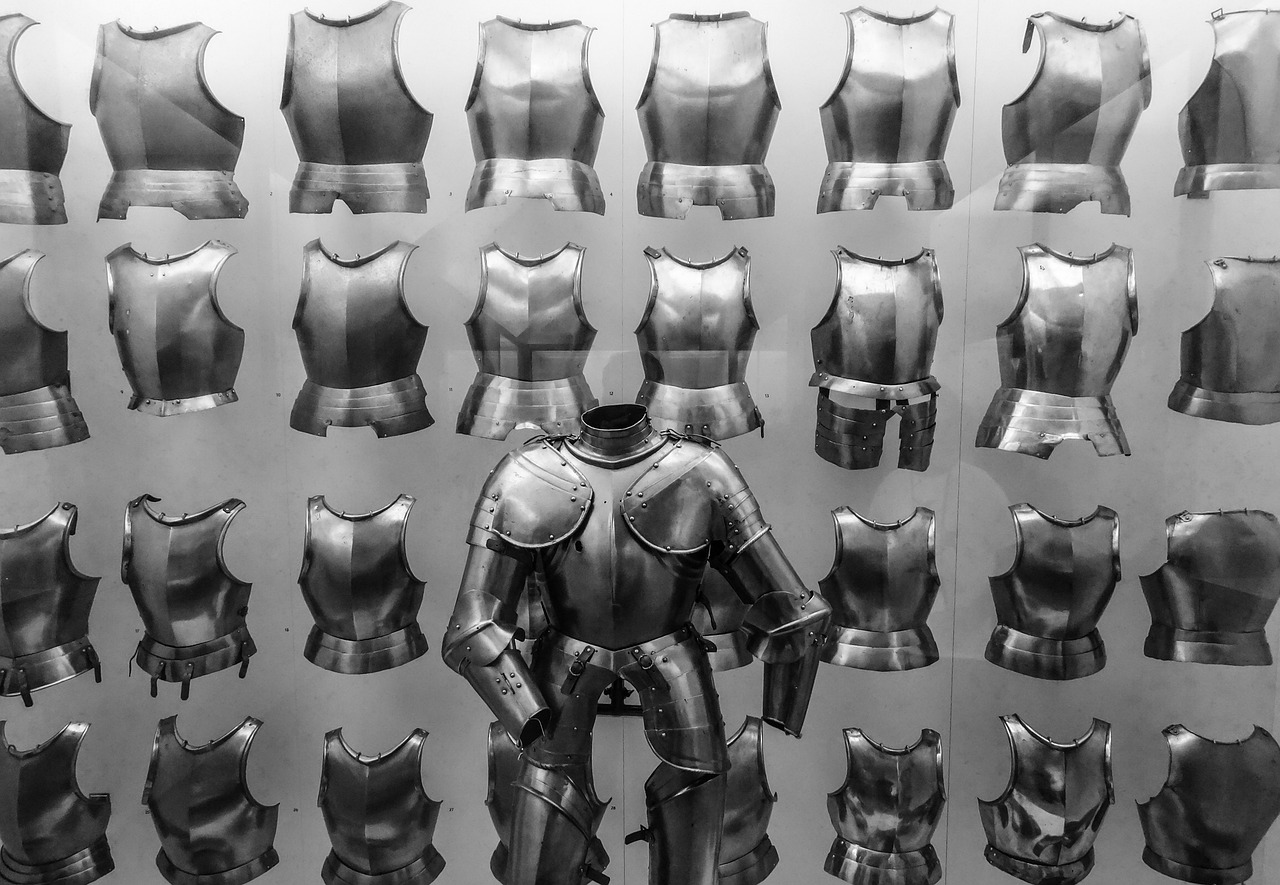
Future Trends in Armor Technology
This article explores the advancements in high-tech armor technology and its critical role in enhancing soldier safety on the battlefield. We will delve into various aspects of this vital subject.
Recent innovations in materials science have led to the development of lighter, stronger armor. These advancements significantly improve mobility while maintaining high levels of protection against various threats faced by soldiers.
There are several types of high-tech armor, including ballistic vests, helmets, and vehicle armor. Each type is designed to address specific threats and enhance the overall safety of military personnel.
Ballistic vests are essential for personal protection. They are engineered to absorb and disperse the energy from bullets, offering soldiers a vital layer of defense against gunfire in combat situations.
Armor is categorized by levels of protection, defined by the National Institute of Justice (NIJ). Understanding these standards helps military personnel select the appropriate gear for their specific operational needs.
The effectiveness of ballistic vests also depends on their comfort and fit. Innovations in design have made it possible to create armor that conforms to the body while allowing for greater mobility and comfort.
Modern helmets incorporate advanced materials and technologies, providing enhanced protection against shrapnel and ballistic threats. These helmets also integrate communication systems vital for coordination during missions.
The integration of technology, such as sensors and communication devices, into armor systems has transformed soldier safety. These technologies provide real-time data and situational awareness, significantly enhancing operational effectiveness.
Smart armor systems utilize sensors to detect threats and assess damage. This data helps commanders make informed decisions and improves the overall safety of soldiers in the field.
As we look ahead, the future of armor technology is brimming with potential innovations that promise to reshape the battlefield. One of the most exciting trends is the development of adaptive materials. These materials can change their properties in response to different threats, offering a level of protection that is both dynamic and tailored to specific combat situations. Imagine armor that hardens upon impact or becomes more flexible during movement—this is not just science fiction; it’s on the horizon!
Moreover, enhanced connectivity will play a pivotal role in the evolution of soldier safety. Future armor systems may be equipped with integrated communication networks that allow for seamless information sharing among troops. This connectivity will enable soldiers to receive real-time updates on threats, environmental conditions, and mission parameters, effectively turning them into a cohesive unit that operates with heightened awareness.
Another trend to watch is the incorporation of biometric sensors into armor. These sensors can monitor a soldier's health metrics—like heart rate and stress levels—providing vital information that can be used for medical response during combat. This capability could lead to quicker medical interventions, potentially saving lives on the battlefield.
To summarize, the future of armor technology is not just about improving physical protection; it’s about creating a comprehensive system that enhances the soldier's overall performance and safety. As these technologies continue to develop, we can expect to see a new era of military equipment that is not only protective but also smart and responsive to the needs of the soldier.
- What are adaptive materials in armor technology?
Adaptive materials are advanced substances that can change their properties based on environmental conditions or threats, providing customized protection for soldiers. - How does connectivity enhance soldier safety?
Connectivity allows soldiers to share real-time information about threats and mission updates, improving situational awareness and coordination on the battlefield. - What role do biometric sensors play in armor?
Biometric sensors monitor soldiers' health metrics, enabling timely medical responses and enhancing overall safety during combat operations.
Frequently Asked Questions
- What materials are used in high-tech armor?
High-tech armor is made from a variety of advanced materials, including Kevlar, Dyneema, and polyethylene. These materials are designed to be lightweight yet extremely strong, allowing soldiers to move freely while still being protected from various threats.
- How do ballistic vests protect soldiers?
Ballistic vests are engineered to absorb and disperse the energy from bullets. They are designed to stop projectiles from penetrating the vest, providing a crucial layer of defense against gunfire in combat scenarios. The effectiveness of these vests is measured by the National Institute of Justice (NIJ) protection levels.
- What are the different levels of protection for armor?
Armor is categorized into different levels based on the NIJ standards, ranging from Level IIA to Level IV. Each level corresponds to the type and caliber of ammunition the armor can withstand, ensuring that military personnel can select the appropriate gear for their specific operational needs.
- How important is the fit and comfort of ballistic vests?
The fit and comfort of ballistic vests are crucial for their effectiveness. A well-fitted vest allows for greater mobility and reduces fatigue during missions. Modern designs have improved the comfort and fit, allowing soldiers to wear them for extended periods without hindrance.
- What advancements have been made in helmet technology?
Modern helmets feature advanced materials that provide enhanced protection against shrapnel and ballistic threats. They often include integrated communication systems, allowing soldiers to stay connected and coordinate effectively during missions, which is vital for operational success.
- What are smart armor systems?
Smart armor systems incorporate sensors that can detect threats and assess damage in real-time. This technology provides valuable data to commanders, helping them make informed decisions and improving the safety and effectiveness of soldiers in the field.
- What future trends can we expect in armor technology?
The future of armor technology may include adaptive materials that can change properties based on environmental conditions and enhanced connectivity features. These innovations aim to further improve soldier safety and operational efficiency on the battlefield.



